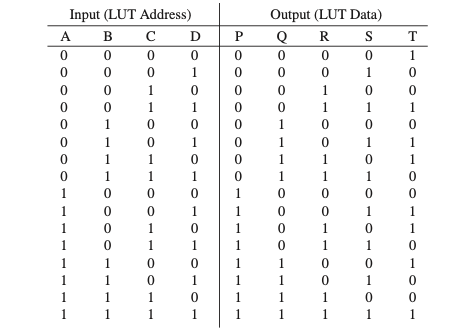Question 2.5: Parity bits are often used in digital communication for erro...
Parity bits are often used in digital communication for error detection and correction. The simplest of these involve transmitting one additional bit with the data, a parity bit. Use Verilog arrays to represent a parity generator that generates a 5-bit-odd-parity generation for a 4-bit input number using the look-up table (LUT) method.
Learn more on how we answer questions.
The input word is a 4-bit binary number. A 5-bit odd-parity representation will contain exactly an odd number of 1s in the output word. This can be accomplished by the ROM or LUT method using a look-up table of size 16 entries × 5 bits. The look-up table is indicated in Figure 2-60.
The Verilog code for the parity generator is illustrated in Figure 2-61. The first 4 bits of the output are identical to the input. Hence, instead of storing all 5 bits of the output, one might store only the parity bit and then concatenate it to the input bits. The parameter construct is used to define the ParityBit which is 1-bit constant, and the 4-bit input data and 1-bit ParityBit are concatenated to make a parity code as an output.

